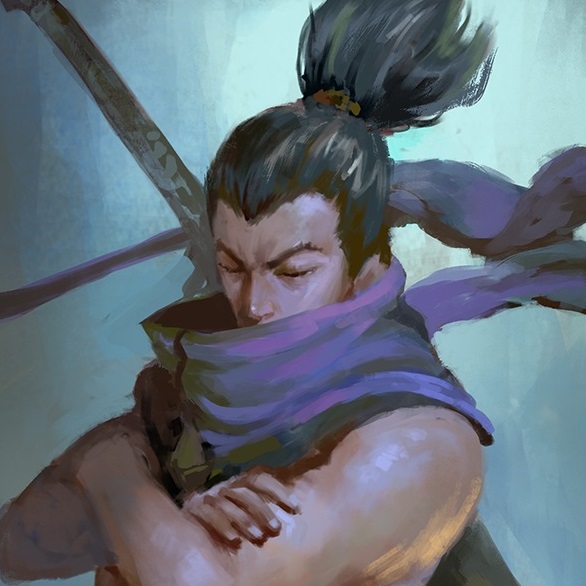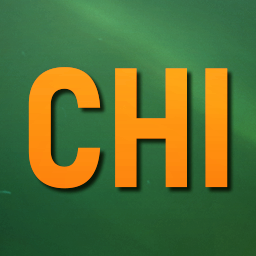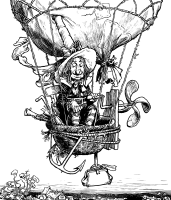Esotar has been a symbol of many things since its inception seven hundred years ago: refuge, community, desperation... survival. However, the one overriding tenet of its existence is hope — Umbrin Nilswan - Aldenian Historian
Summary
Esotar is a city situated on the now separated Eastern portion of the continent of
Aldenia. It was split off from the mainland by the great Earthquake Dragon
Mohzall during The Cataclysm War. After it was initially formed as an enterprise in peacekeeping between Humans and Orcs, the city which drew in individuals belonging to bestial races, particularly those typically distrusted by wider society such as Kobolds.
Government
Originally, there was a 'Minister' for both Orc and Human at the very top, with other positions below scattered between the two races. Nowadays, with a much wider spread of races and reduced Human presence in comparison, the city is ruled by a council of representatives of each of the main races present in the city. As such, there is a representative for Orcs, Humans, Goblins, Kobolds, Bugbears, Feldeni and Avedeni.
Architecture
Due to the origins being a collaboration between Orcs and Humans, the architecture of Esotar generally takes inspiration from both cultures. The more advanced building techniques combined with the natural look of Orcish buildings mean that the vast majority of Esotar resembles the Orc capital of Mundas but with sturdier, more insulating materials. Esotar was a city that experienced rapid growth in the years after its founding and each expansion with each wave of people created a somewhat haphazard organisation to road and district placement. Also, as Esotar became home to more and more races with their cultures in tow, their influences became known on the architecture of the city.
Geography & Climate
The surrounding area, as with the majority of northeastern Aldenia, is primarily made up of rolling hills and patches of deciduous forest. Following its separation and seemingly due to the constantly churning seas around the island trapping warmer winds within, the Eastern Island's climate is noticeably warmer than it was prior to the War.
Agriculture
Due to the fertile lands around the city, Esotar has always managed to sustain itself with produce farmed locally to the city. Standard crops such as potato, barley and wheat along with other vegetables and grains form the majority of what was grown around Esotar. Post-Cataclysm War, with the small shift in climate, more exotic fruit not normally able to withstand the colder winters of Aldenia were then able to be grown on the Isle.
History
Origins
Esotar was formed in 121 BCE as a joint effort between Humans and Orcs to live together in harmony. In the years prior, more moderately thinking leader rose into the respective positions of power on both sides. Gorran Lothrun became King of the Humans in 128BCE and Ozzad the Loyal claimed the Chieftainship of the Orcs two years later. Before their stewardship, the relationship between Orcs and Humans was fractious and often developed into conflict. Orc society in particular frequently shifts between peace-seeking and warmongering. Whilst a leader who wishes for peace is in power, those whose hearts are set on violence and domination grow restless and eventually band together and attempt to overthrow the Chieftain, sometimes successfully, sometimes not.
However, in this rare instance, both Humans and Orcs were being led by individuals of a similar mind. In the years that followed Ozzad's ascension, peace talks began between the two factions. Out of the outcomes of the talks was a proposition to found a joint settlement in the as of yet unpopulated northeast corner of Alenia. Esotar was officially founded in 121 BCE. The name 'Esotar' itself is formed from the Olde Tongue word 'Es' and Orcish word 'Tar'. Directly translating, Esotar means 'Eastern Home'.
Pre-Cataclysm
Esotar began with around 400 inhabitants, split evenly between Orc and Human. Over the next few years, that number grew as more of each race joined in with the effort. The additions following the initial settling were far more heavily weighted towards Orcs. As word spread of this venture, Esotar became home for individuals of so-called 'monstrous' races such as Kobolds, Bugbears, Goblins, Hobgoblins and so on. By the time the Cataclysm War broke out in 9 BCE, Humans were by far the minority in Esotar. Esotar had become a haven for all kinds of marginalised races and whilst technically the settlements fell within the boundaries of what was considered Human territory, Esotar was allowed to govern itself.
During the Cataclysm War
The majority of the Orcish population remained spread across the Mundas Basin in the north (northwest of Esotar), with only one notable settlement, simply known as Mundas. Mundas is where the Chieftain and associated leaders of Orcs resided. In 9 BCE, the Orc who became known as
Drakk the Brutal, successful challenged and won the Chieftainship of Orc-kind. Drakk was severely anti-human and anti-every other race in general. Drakk himself would eventually tolerate eight non-Orc individuals when he was recruited by
Astrona Emberwild into
The Council of Nine; the evil group instigating The Cataclysm War. This change of leadership caused those Orcs who still preferred peace over violence to seek refuge elsewhere, the majority of which ended up in Esotar.
Despite the reborn conflict between Orcs and their nearest neighbours, Esotar was left alone by the war itself. However, sadly it did not escape the war unscathed. In the final months, The Council of Nine released Mohzall, the Earthquake Dragon. Mohzall's only focus was on destruction. Attempts to level the Dracaran city of Vox Dracon were unfruitful due to their superior air defence capability. Frustrated, Mohzall turned south. The island of Soloon became the first major victim. Unfortunately, the Earthquake Dragon's appetite for destruction is endless. Mohzall next success was splitting off the eastern portion of the continent entirely, Esotar with it. Whilst not directly the line of fire, Esotar was rocked by the resulting tremors as the whole portion was shifted further east. Esotar was left, not in ruins, but not too far from it.
Post-Cataclysm
Esotar was stranded. A literal sea now separated Esotar from the main continent. The island as a whole is now simply referred to as The Eastern Isle. Worse still, the waters surrounding the Eastern Isle are seemingly permanently impassable by ship. They are a constant churning chaotic barrier. This meant sending aid and resources was practically impossible. Esotar was not built with a teleportation circle. As such, only those skilled with the highest level of teleportation ability were capable of easily passing between the mainland and Esotar. Those races capable of flight attempted the crossing with varied success. The stormy waters seemingly extending the air above also.
As a result, Esotar was forced to rebuild largely on its own, using the resources of the now-island around it. Naturally, this took a fair bit longer than settlements on the mainland, but by the time Jansen Billowblock invented his wondrous Cloudrunner nearly forty years ago, Esotar was nearly fully repaired.
The Cloudrunner has been a major boon in allowing rapid repairs of the remaining damage as the magical skyship allows of easy passage between Dawnstone and Esotar. Whilst, naturally, the skyship does have limited capacity, any volume of trade and resources passing to Esotar is a large improvement over the nothing they had before.
Today, Esotar stands a mostly self-sufficient city-state. The land, whilst still technically owned by the Humans, is in no way governed by anyone outside Esotar's walls and widely regarded as belonging to them now.







I found the story of this city very interesting, but the writing made it hard to follow at times. I'll use the summary as an example of things I found missing (in bold) from the sentences: "Esotar is a city situated on the now separated Eastern portion of the continent of Aldenia. It was split off from the mainland by the great Earthquake Dragon Mohzall during The Cataclysm War. The city was initially formed as an enterprise in peacekeeping between Humans and Orcs, it was a city which drew in individuals belonging to bestial races, particularly those typically distrusted by wider society such as Kobolds." Mohzall, the Earthquake Dragon: is that also Vox Dracon? And if not, what is a Vox Dracon? I really liked that you added the current representatives, I think maybe a quote or two (either in the article or sidebar) would help flesh out the personalities, and it would give you a chance to discuss other aspects of the city. For example, while you talk about the reconstruction, you say nothing of the citizens living there, and how did their daily lives change after the earthquake. It could be interesting to hear about it.
Thanks & corrected. I think the sentence makes it clear Vox Dracon is a location (for how can it be levelled otherwise?) but you're right that it needs a little more detail there. Amended to include that Vox Dracon is the Dracaran/Dragonborn capital. Since this exists as part of what is essentially a Wiki for my D&D world, the articles are designed for me/my readers and are therefore written as a list of facts. As such, things like quotes I don't really think about when writing these. It's definitely something I need to think about more in terms of articles, thanks.
Makes sense, I guess I'm just used to reviewing a bit less "Wikipedia" style articles, but if this is what works for you while you GM, that's all you need :)